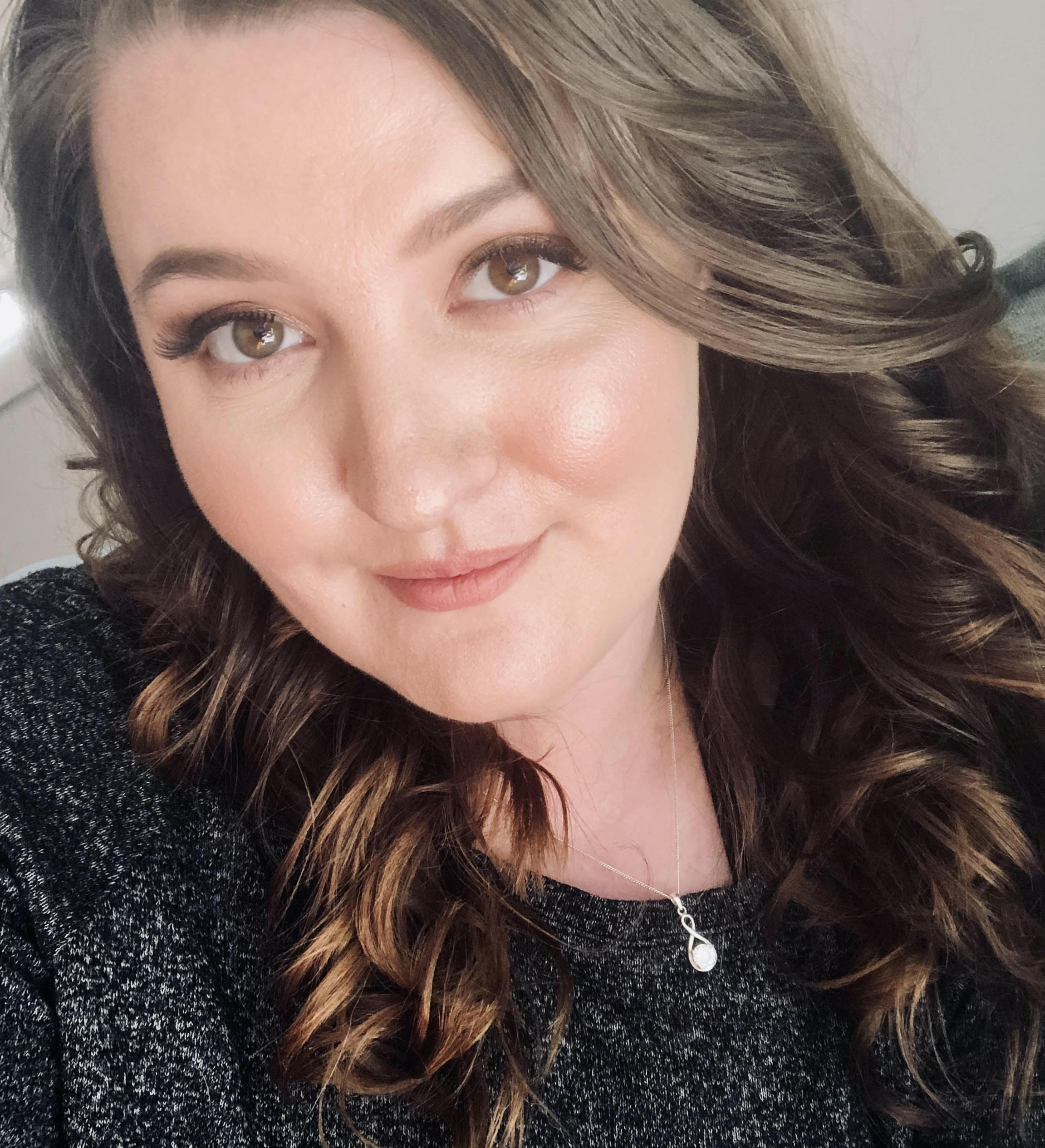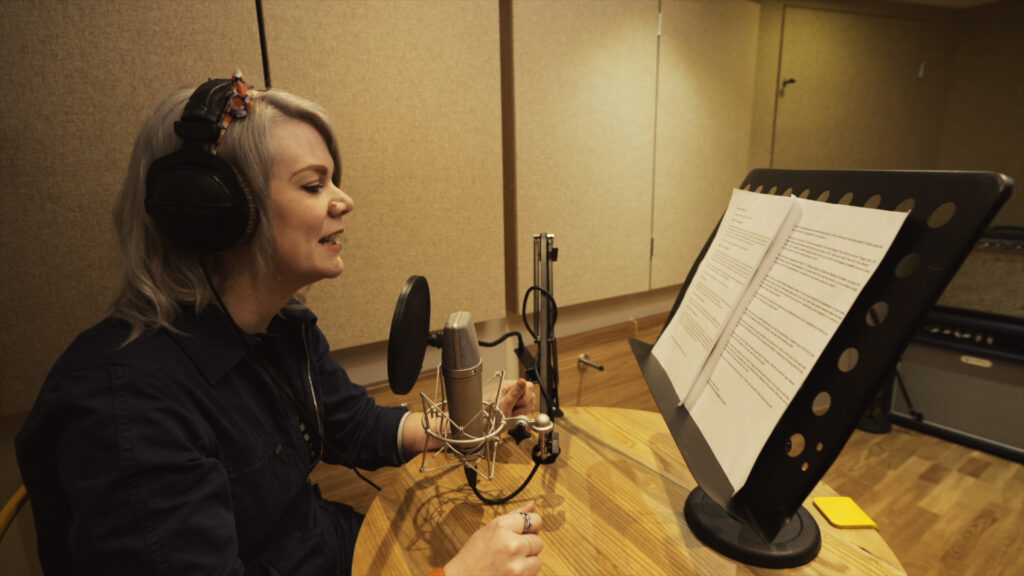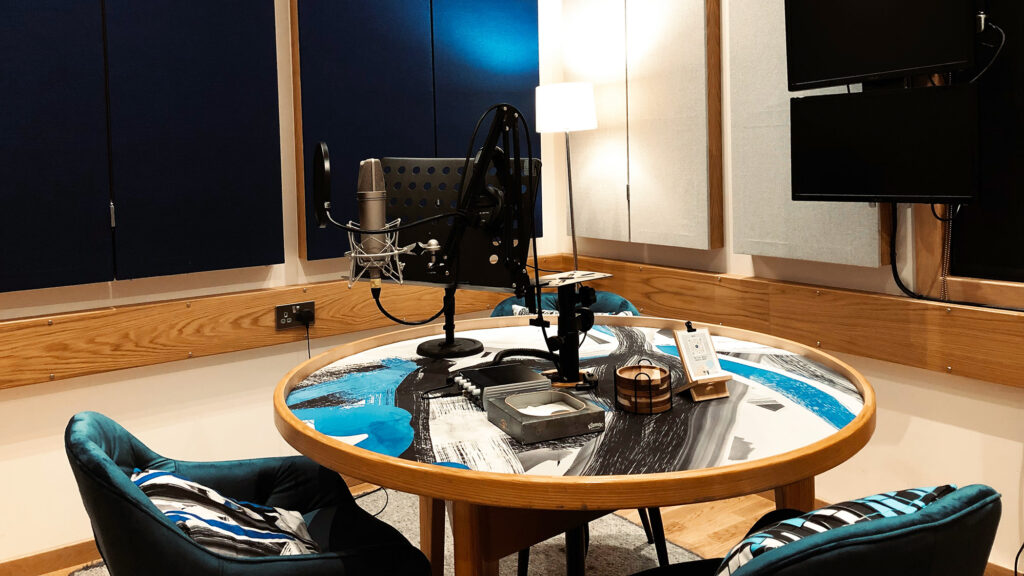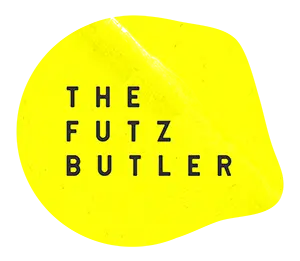How to Get the Best Out of Voice Artists (According to Them)
Achieving outstanding voiceover results hinges significantly on the quality of collaboration between producers and voice artists.
While the technical aspects of recording are undeniably crucial, the human element – the voice artist’s nuanced performance – often stands as the paramount factor in bringing a script to life with true impact. The most impactful and authentic voiceovers stem from a deep understanding of, and a collaborative partnership with, the talent behind the microphone.
This article transcends generic advice, offering a unique distillation of real-world experience in the form of a producer’s guide to directing voice talent.
The perspectives presented are drawn directly from a comprehensive survey and in-depth interviews with a diverse group of successful, working voice artists from both the UK and the US. Each artist specializes in their own distinct area of voiceover work, such as commercial, narration, audiobooks, or corporate projects, ensuring a broad and relevant spectrum of professional viewpoints.
These are the professionals who navigate the intricacies of the recording process daily, making their perspectives and actionable advice invaluable for producers seeking to optimize their voiceover sessions.
Table of Contents
1. Meet the Artists: Bios and Backgrounds
Before we dive into their insights, let’s meet the professionals behind the mic. Each of these voice artists brings a unique perspective from their own specialism, whether it’s commercial spots, long-form narration, animation, or corporate work. We’ve included their bios and links below so you can explore their work in full.

Karissa Vacker
Karissa is a classically trained actor who has always loved the power of storytelling. She has narrated over 500 audiobooks, and can most frequently be heard in the thriller, YA, and rom com genres. She is Audie nominated, and a proud recipient of many AudioFile Earphones awards and is also a SOVAS and International Thriller Writers (ITW) award winning narrator.
Along with credits from major regional theaters, she has also enjoyed a career in film and TV. Some credits include NCIS, Castle, How I Met Your Mother and Chuck. She hosts a weekly sleep meditation podcast, Sleep Wave, for the app Sleepiest and does a variety of other VO work.

Alexia Kombou
Alexia is a hugely versatile multi award-winning Voiceover Artist from North London, winning Voiceover Artist of the Year 2018, Best TV Commercial 2020, 2021 and 2022 and Best Radio Ad 2024.
From urban and cool to trustworthy and sophisticated, over the years Alexia has voiced a range of work for major global and local companies and brands including campaigns for Coca Cola, Nivea, Ernst Young, Adidas, BBC, Polestar and Clearscore.
Alexia is involved in all kinds of Voiceovers from Radio and TV Commercials, to Corporate reads, Dubbing, E-learning, Animation and Medical Narration.

Howard Richie
Once described as Taylor Swift’s favourite voiceover, Howard has built a diverse and quietly far-reaching career behind the mic. In the UK, he’s known for his work with Capital, Big Top 40, and Heart, and as the voice behind major Wembley Stadium events like the Summertime Ball and Jingle Bell Ball.
Internationally, his voice features across the KIIS and MIX networks in Southern Australia, and stations including Vibe, Virgin, and MBC in Saudi Arabia, Radio Globo in Rome, and most recently, two of Mexico’s largest radio stations.
On television, he’s been heard on promos for Sky, Discovery, and ITV, and his commercial work includes campaigns for Vodafone, Hyundai, Fairy, and Playstation.

Naomi Martin
Naomi has been a voiceover artist for over 20 years, working across multiple genres, including TV, radio, animation, documentaries, corporate videos, apps … and more! Naomi has a smooth, clear and assuring voice and is wonderfully versatile. She loves working with clients to get the very best out of each project that comes her way!

Andrea Becker
Andrea Becker is a highly versatile voice actor and soprano vocalist with over a decade of experience. Originally a classically trained singer, she transitioned into voice acting in Los Angeles, training with top VO coaches across commercial, corporate, eLearning, animation and video game genres.
Known for her fresh, conversational tone and character versatility, Andrea has voiced everything from national campaigns to quirky animated roles—mastering accents including British RP, Scottish, French and Southern American (she’s from Texas!). Her credits include Harry Potter: Magic Awakened, Final Fantasy XV and Credit Karma.
As a full-time VO artist, she works from her Source Connect studio. She’s also performed as a session singer on Storage Wars: NY, Twist & Shout (with Lemmy Kilmister), and writes for TV/film with her synth-pop band Discothèque.

Sharifa Safiya Mclaughlin
Sharifa Safiya Mclaughlin is a female British voice actor based in London. She has had the pleasure of working with brands such as Nike, H&M, Barclaycard, Adidas, American Girl, Lego and more.
Sharifa brings a versatile and dynamic quality to every script, and her journey in the world of voice acting has been a thrilling exploration of tone, emotion, and character.
Whether it’s the animated excitement of a child’s story, the warm sincerity of a corporate narration, or the playful allure of a commercial, she prides herself on delivering performances that resonate with audiences.

Aimee Smith
Aimee Smith is a full-time voice talent based in Australia, working with studios from all around the world for over 10 years. An experienced video game voice actor of over 200 video games such as Mobile Legends and Arknights, she also provides coaching to other remote voice actors to help them develop their video game careers too. Loving her very mixed-bag VO career, Aimee has also recorded national TVCs for brands including Chemist Warehouse, ALDI and Telfast, has provided dubbing for an array of anime on Crunchyroll as well as for the TV show FriendZSpace, and narrated over 35 audiobooks for publishers such as Penguin Random House and Tantor Audio.

Sebastian Brown
Sebastian trained as an actor at the Guildford School of Acting. After working in theatre and television for a short time, he transitioned over to production, and started working on his own creative ventures, and eventually became a production assistant and assistant director. While working in the media sector he started to explore voice over and eventually retrained and set up his own studio. He now works full time as a voice actor specialising in commercial, corporate and audiobook work.

Amy Forrest
Amy is an visually impaired actress and voice artist originally from West Yorkshire, based in London. She trained at Arts Ed,The Second City and NYMT. Her experience expands across a range of Television, Film and Theatre. Amy is currently appearing as recurring role Emma in After the Flood on ITV. Other television credits: Sister Boniface Mysteries 2, Holby City, Call the Midwife, Emmerdale, Coronation Street and The Syndicate.
Notably, she played Mrs Ryder in Small Island and supporting lead, Ruth in Manor, both at The National Theatre. Amy has voiced commercials for Channel 4, Flash and York Races. She has also recorded numerous audio dramas, animations and audio books including Roar by Beth Mead for Hachette UK. Recent video game includes: the newly voiced Wartales for Shiro Games.

David Holmes
David is a British voiceover artist who was brought up in Scotland and lives in England… as a result his voice has a soft and earthy Scottish edge coupled with a clear and articulate British accent.
David spent over twenty years as a designer in the theatre industry, collaborating in over 150 theatre productions in the UK, Europe and internationally, so perfectly understands the importance of communication with an audience across many different cultures.
As a voice artist he has worked on a great many projects in many genres and tends to specialise in Corporate Narration, Meditation, Commercials, Live Event Announcing & Animation Characters.
These are the professionals shaping the industry, navigating remote sessions, adapting to changing trends, and elevating every read with insight and craft. What follows is their advice, in their own words.

2. Why the Producer–Voice Artist Relationship Matters
Great voiceovers don’t just happen. They’re shaped in the space between the words, and that space is shared between producer and artist.
Producers bring the brief. Artists bring the soul. And in that middle ground, what matters most is the human chemistry: clear direction, mutual respect, and the ability to adapt.
As many of the voice artists we spoke to pointed out, the tone and tempo of a session are often set by the producer. When that tone is warm, collaborative and clear, the performance usually follows suit. Alexia Kombou, a multi-award-winning VO artist, put it simply: “Know what you want from the performance of the Voiceover and clearly explain the tone and feel you want to achieve before the first take.”
Likewise, Naomi Martin emphasised the emotional environment: “Firstly make me feel relaxed. Then clear direction – explaining exactly how the client wants to feel when they hear my voice.” That emotional safety net allows talent to experiment, play and ultimately land a take that feels alive and authentic.
At The Futz Butler, we understand this intimately. Our voiceover recording studio in Central London is built to support not just pristine audio capture, but the kind of human-to-human collaboration that elevates takes from ‘fine’ to unforgettable. Whether you’re recording a three-word brand line or a 300-page audiobook, we believe the process should feel effortless—for both sides of the glass.

3. Tips from the Booth: What Voice Artists Want Producers to Know
3.1. Direction, Not Dictation
Getting the most out of a voiceover artist in any voiceover session shouldn’t mean over-directing. In fact this can create even more issues. The preferred route is giving clear, purposeful guidance that allows performance to flourish.
“Please don’t give a 10 minute talk on the tone and style as this is too much information for the voice to be able to take and use, instead use a few key words that describe the feel of the project and what you want the voice to achieve.“
Alexia Kombou
When giving feedback, clarity helps voice artists get to the heart of your message faster. But always be sure to call out the positives as well as the negatives.
“Say what you liked and say what didn’t land and why.”
David Holmes
Giving context to the project and the read can be a huge help too:
“Context is everything, if there isn’t any context the voice will need background information about the project and details to deliver effectively.“
Alexia Kombou
And a little levity can go a long way:
“Positive encouragement! Be chatty and relaxed with me and you will always get my best work. And clear direction is always a winner.”
Naomi Martin
For any producer directing voice talent, the best direction invites collaboration. It anchors the artist while giving them freedom to play. Aim to define the emotional intention, not just the shape of the line.
3.2. Let the First Takes Breathe
In the rush of an urgent or time-sensitive voiceover session, it’s easy to jump in with feedback before the voiceover artist has even found their rhythm. But nearly every voice artist we spoke to stressed the value of letting those first takes breathe.
“Be open to the first take or two and listen for anything the VO gives you that you hadn’t thought of”
David Holmes
That sense of space – creative room to move – often leads to unexpected nuance.
“Allowing play. Play creates a creative collaborative result.”
Howard Ritchie
Instead of rushing to perfect a line immediately, give the voiceover artist time to settle into the tone, connect with the material, and try out interpretations. You’ll often find that the natural shape of the performance emerges more organically than if it had been steered too early.
“A common misconception is that voiceover actors can nail every take perfectly on the first try. In reality, even experienced artists often need a few adjustments to find the right tone, pace, and emotion.”
Sharifa Safiya Mclaughlin
If a read isn’t quite right off the bat, resist the urge to micro-direct. A quick second take after the artist has heard it back often lands much closer to what you had in mind, and saves time later in the voiceover session.
More Than a Mic and a Room
State of the art studios, top-notch recordings, and knockout direction. Your voice deserves better.
3.3. Be Clear, Not Clever
Not every producer is a copywriter, and that’s a good thing. When directing voice talent, clarity always trumps cleverness. Voiceover artists aren’t mind readers, and vague or metaphor-heavy direction can muddy the waters.
“In my experience, it’s almost always the producer who makes the read work — through their direction, their clarity, and their ability to set the tone. The very best sessions I’ve ever had were shaped not by guesswork, but by a producer who knew how to communicate what they wanted.”
Howard Ritchie
In a voiceover session, over-stylised direction like “make it pop” or “give it more sizzle” can confuse rather than guide. What’s better is anchoring your feedback in outcomes—what do you want the audience to feel?
“Be very clear about tone, style, pacing, the feel of the work.”
Sebastian Brown
Getting this right starts with the brief itself:
“I deliver my best when the brief is clear, who I’m speaking to, the tone we’re aiming for, and any tricky pronunciations noted upfront”
Sharifa Safiya Mclaughlin
If you’re not sure what to say, frame your feedback around emotions or moments in the script. This kind of clarity respects the artist’s process and fast-tracks stronger performances.
3.4. Tone is Contagious
The atmosphere a producer creates in the room (or on the line) has a direct impact on the final take. Energy, pace, and emotional safety all ripple across the performance.
“A bit of warmth, lightness, or just friendly energy can make all the difference. It helps me feel at ease, and when that happens, I can usually deliver something sharp and polished for you much faster.”
Howard Ritchie
It’s not about forced enthusiasm, but creating a space where the voiceover artist feels supported, not scrutinised. Calm, focused producers who give genuine feedback create sessions where artists can really settle in and deliver.
“Just keeping it relaxed and creative, embracing the concept of ‘play’ – there are no wrong answers and you’re there to just try things and see what resonates the most.”
Andrea Becker
When directing voice talent, the way you ask for changes matters as much as what you’re asking for. A great voiceover session can be heavily influenced by how the room feels. And that starts with you.
3.5. Performance Starts Before the Mic
A great voiceover session doesn’t begin when the artist hits record – it starts with the brief. The quality and clarity of what’s shared before the session can dramatically influence how quickly a voiceover artist finds the right read.
“For me personally, the more information the better so that I can see the overall picture of what the client may want and what the director is looking for.”
Amy Forrest
Whether it’s reference music, tone guides, or rough edits, pre-session assets help voice artists understand the emotional space they’re stepping into.
“If you already have the music track for a commercial script you’d like recorded, please feel free to send it through to me! I love to play it through my headphones as I’m recording to determine if I’m applying the right projection level/vibe/speed and am effectively creating a read that’s going to be complementary to the overall aural experience!”
Aimee Smith
Even a rough version of the final video or audio bed can do wonders for interpretation, pacing, and tonal alignment.
“As much info as possible on the client and listener and what is expected of me in the session. Video clips are great – if the visuals are available, then definitely show them to me!”
Naomi Martin
Longer-form content such as documentary narration, as well as ficticious works such as audio dramas, audiobooks and video game narration all bring an additional layer of detail. Sharing as much of this with voice artists speeds the process up immesely.
“Pronunciations of unique words, names, places. Recordings of foreign words/phrases. A bonus to have a character breakdown with accents listed.”
Karissa vacker
“It’s really important for video games with combat that we know what weapon the character wields, as sometimes I’ll be in a session asking and the director is unsure. So if the character art doesn’t feature them with their weapon and the end client is not in the session, I’d love for the director to check with them ahead of time so that we can ensure the attack sounds I provide aren’t generic (for example, an axe sounds vastly different from a sword).”
Aimee Smith
As a producer directing voice talent, your ability to prepare makes their ability to perform that much sharper. Every bit of useful context you provide before the session, even if it feels small, adds up to faster alignment, fewer retakes, and more confident performances.
4. Remote Sessions: Smooth Collaboration at a Distance
Remote voiceover sessions are now the norm—but just because they’re convenient doesn’t mean they’re without pitfalls. Smooth collaboration requires just as much intention as it would in-studio.
“I’ll send a 30 or so second clip from my recording to ensure it sounds as expected. That will sound different than hearing me over zoom.”
Karissa Vacker
Mic bleed, background noise, and off-camera commentary can all derail a take. Simple etiquette like muting your end goes a long way.
“Please make sure you mute whilst the VO is recording.”
Alexia Kombou
From a technical standpoint, it’s about reliability. Wired internet, pre-shared scripts, and backup plans are your insurance against dropouts or confusion.
“On both sides of the session – ethernet not wifi, whenever possible!”
Andrea Becker
For producers directing voice talent remotely, remember: a little forethought equals a lot less stress. Just because you’re not in the same room doesn’t mean you’re not in the same session.
5. Misconceptions Producers Should Leave at the Door
Even seasoned producers sometimes carry assumptions into a voiceover session that can hinder the process. Our artists called out some of the most common ones.
“Don’t be afraid to give us the occasional line read! I think a lot of directors think we’ll find it insulting, but as long as it’s not like you’re dictating every single line of the entire session, sometimes it’s really just the best way to communicate.”
Andrea Becker
Overloading a voiceover artist with constant notes can flatten a performance. Sometimes less is more.
“More direction doesn’t necessarily mean better direction.”
Karissa Vacker
Technical set-ups matter, and artists often know what works best for their own voice. Trust that expertise.
“Every mic is different. Some of us need certain things in our ears and we all have different preferences in levels, mix, EQ.”
Howard Ritchie
Keeping an open mind allows for stronger, more original takes, and letting the voice artist give their own interpretation can work too.
“Ask for more takes – sometimes the phrase ‘I think we got it…’ gets bandied around, but I always want clients to be sure they have everything they need. So ask for another take, ask for something different, ask the VO how they would do it – it’s always going to provide something more natural. And most VO’s want to leave a session having given 110%.”
Sebastian Brown
Voiceover work is craft, not a mechanical process. Treating it as such creates better results for everyone involved.
VO artists are capable of more than the tape they have provided. In the session, they are able to adapt and use a variety of voices. VO artists are malleable and so the producer should be open minded and use this to their advantage.
Amy Forrest
6. A Producer’s Guide: Voiceover Session Checklist
The insights from our contributing artists can be distilled into a simple checklist—an at-a-glance guide to help every producer run smoother voiceover sessions.
✅ Provide emotional and tonal context, not just technical specs.
✅ Share assets in advance: scripts, visuals, music beds, or rough edits.
✅ Use plain, concise language when directing voice talent.
✅ Allow warm-up takes before you start micro-directing.
✅ Mute yourself when the voiceover artist is recording remotely.
✅ Give direct, constructive feedback—be kind, specific, and clear.
✅ Trust the instincts and experience of the voice artist.
This producer’s guide is about creating the conditions where collaboration can thrive and performances can shine.

Why Studio Choice Still Matters
Technology has made remote recording much more accessible, but not every voice artist has a professional home setup. The right space supports both the technical quality and the collaborative energy of a voiceover session.
A purpose-built, professional studio environment provides:
- Acoustically treated rooms that capture every nuance of a voice artist’s performance
- A selection of microphones & preamps to suit every voice
- Engineers who handle the tech, so producers can focus on directing voice talent
- Immediate playback and adjustment without technical delays
- A distraction-free environment that allows creativity to flow
At The Futz Butler, our Central London voiceover studios are designed not just for crystal-clear sound but for comfort and collaboration. Producers and voiceover artists alike benefit from a space where the focus is entirely on performance.
The result? Voiceover sessions that run smoother, sound better, and give everyone confidence in the final take.
Conclusion: Championing the Talent
At the heart of every great voiceover session is collaboration. Technology, studios, and scripts all matter—but it’s the partnership between producer and voiceover artist that truly brings words to life.
The best producers recognise that directing voice talent is less about control and more about creating the conditions for great performances: clear communication, preparation, encouragement, and trust.
Each of the artists featured here has shown how much can be achieved when that partnership is respected. Their advice forms not just a producer’s guide to smoother sessions, but a reminder that the most memorable voiceovers are always the product of shared creativity.
If you’re looking to elevate your next project, our Central London voiceover recording studio is designed to help producers and voice artists achieve their very best work together.
FAQs
What makes a successful voiceover session?
A successful voiceover session comes down to clear direction, preparation, and a supportive atmosphere. Producers who give concise feedback and provide context – like music beds or visuals – tend to get stronger performances.
How should a producer give feedback to a voiceover artist?
Be specific, kind, and concise. Focus on outcomes (“make it sound warmer, more conversational”) rather than abstract terms. Always frame feedback in a way that supports collaboration rather than control.
What should a producer prepare before a voiceover session?
Share scripts, pronunciation notes, tone guides, and any relevant assets like music beds or storyboards in advance. The more context a voice artist has, the faster they’ll land the right read.
Why use a professional voiceover studio if remote recording is possible?
Professional studios offer superior acoustics, immediate playback, and technical support, ensuring your focus stays on directing voice talent, not troubleshooting audio.
What’s the biggest misconception about working with voice artists?
That they’re “just reading lines.” Voiceover work is interpretive and performative, requiring skill, nuance, and experience to bring scripts to life.


